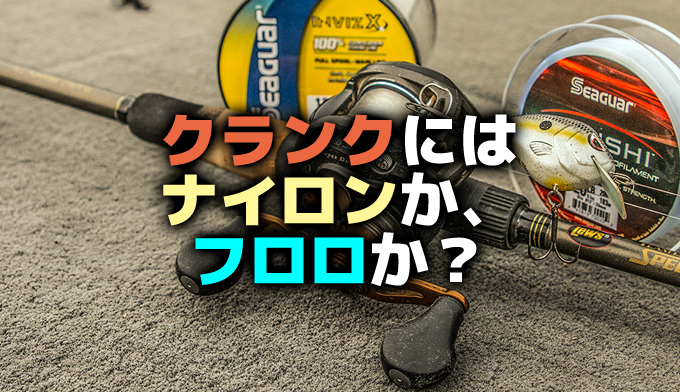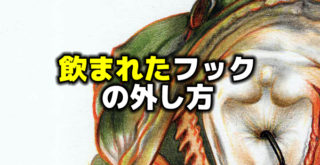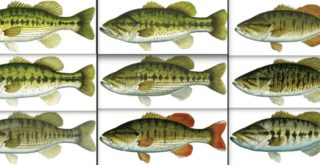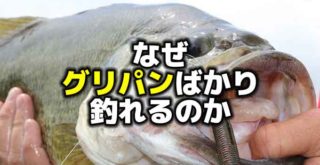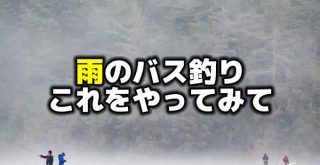バス釣りで見逃してはいけない6つの細かなこと【前編】

Photo by scout.com
こんにちは!店長の小山です!
本日は海外サイトより、”6 Bass Fishing Details You Should Never Overlook”という記事を引用してご紹介いたします。
引用先:scout.com”6 Bass Fishing Details You Should Never Overlook”By WALKER SMITH 05/13/2014(海外サイトです)
今回は前編です。
1990年代のはじめ、当時はバス釣りの雑誌というものが少なく(私が知らなかっただけかもしれませんが)、「バス釣り入門」的な書籍を読まれていた方が多かったのではないでしょうか。バスが釣れる季節、ポイントの例、実績ルアーの紹介と、アクションのつけ方というのがメインの本でした。
バス釣り雑誌が登場したころは、そういった書籍の記事にプラスして、ホットでタイムリーな釣り場紹介や新製品情報、タックル開発秘話などがプラスされたものでした。
まだメディアプロという存在はなく、トーナメントプロは情報を出したがらない状況だったと思うので、おそらく記者さん方は情報集めに苦労していたんじゃないかと思います。
2000年代に入って、バス釣りは細分化が進んできました。使うルアーによってロッドやリールを使い分けるという意味の細分化はもちろんのこと、春夏秋冬4つの季節をさらに細かく10~12くらいの季節に分けて考えたり、同じポイントやエリアでも状況によって細かく分けて考える、狙う水深によってシンカーやラインのサイズを変えるなどなど、釣り方や考え方の面でも細分化がされてきました。
これはバスを取り巻く環境(バスがスレた、個体数が減ったなど)が変わってきたことと、インターネットの発達で誰でも情報が手に入りやすくなったことが関係してると思いますが、現在、釣れる人と釣れない人の差は、もっともっと細かい部分にまで現れるようになってきているようです。
この記事は、釣れてる人が気にしているそんな細かい部分にスポットをあてて書かれています。
「そんなことが関係してるんだ!?」という内容もあるかもしれません。ぜひ読んでみてください。
その時、何が起きてるのか
Paying close attention to bass fishing details is often what separates good anglers from great anglers. You can have a nice boat and all the high-quality gear money can buy, but developing an ability to notice and take advantage of small, seemingly menial details will give you a definite upper hand on both the bass and other anglers.
We’ve all been there at some point in time—the fishing was great a few days ago, but now the bass just won’t cooperate. You’re using the same bait that has been whacking ‘em all week long, the conditions haven’t changed and you’re fishing your best spots. So what in the world happened? The answer is often found in the details.
バスの釣りにおいて細かい部分に細心の注意を払うことは、「グッドアングラー」と「グレートアングラー」の分かれ目となっています。お金を出せば素敵なボートを手に入れることができますし、高品質のタックルを買うこともできます。しかし、小さな、一見どうでもいいような細かいことに気づき、それを活用する能力を身に付けると、バスと他のアングラーの両方に対し確実に優位に立てます。
私たちはある時、そこにいました。数日前に素晴らしい釣りができたのが、今日はバスが協力してくれない。一週間中ずっと釣れていたのと同じルアーを使用しています。条件は変わっておらず、最高のポイントで釣っています。世界で何が起こっているのか?だいたいの答えは細かいことにあります。
1.騒がしい水面
When you’re in the zone and super-concentrated, it’s easy to become totally oblivious to your surroundings. Now, it doesn’t exactly take the mental fortitude of a rocket scientist to notice bass busting bait on the water’s surface. I’m not really talking about that. What I am referring to, however, is the small surface disturbances many of us tend to overlook throughout an ordinary fishing day.
あなたがいわゆるゾーンに突入していて、超集中しているときは、簡単に周囲のことに全く気が付かなくなってしまいます。今、水面でルアーに襲い掛かるバスに注意するには、必ずしもロケット開発の科学者のような不屈の精神みたいなメンタルは必要ではありません。私はそういうことを言いたいのではありません。しかし、私が言及しているのは、私たちの多くが普通の釣りの日を通して見過ごしやすい小さな水面の乱れです。
弾ける音?
Popping— Whenever you’re fishing in shallow water, especially in the late-spring months, make an effort to listen for any “popping” noises in the area. This is usually indicative of bluegill feeding near the surface, which can be an excellent sign for bass anglers. Whenever small panfish are in the area, big bass are often nearby. Look for nearby cover such as docks, grass lines or stumps and break out your bluegill-colored squarebills and jigs. It’s not uncommon to find some true giants in these areas, so make sure you’re using at least 14-pound fluorocarbon for cranking and 20-pound fluorocarbon for flipping and pitching.
シャローエリア、特に晩春に釣りをしているときはいつでも、そのエリアの “弾けるような音"を聞く努力をしてください。これは、通常、表層近くにブルーギルがいることを示しており、これはバスアングラーにとっていい兆候となり得ます。小さなギルがそのエリアにいるときはいつも、大きなバスが近くにいることが多いです。ドック、ウィードライン、スタンプなど近くのカバーを探して、ブルーギルカラーのスクエアビルクランクやジグを使います。このとき、ジャイアントバスが掛かることは珍しいことではないので、少なくとも14ポンドのフロロカーボンをクランキングに、20ポンドのフロロカーボンをフリッピングやピッチングに使用してください。
捕食音?
Slurping—If you hear “slurping” sounds when fishing around shallow vegetation, you may want to consider relocating to a new area. A lot of folks think it’s bass feeding on the surface, but it’s usually carp. More times than not, when carp infiltrate a grass bed, nearby bass will scatter and find new places to hide. Whether it’s the commotion or the muddied-up water the bass dislike, we’ll never really know, but in my experience it’s hard to catch bass in a carp-filled grass bed. Look for nearby vegetation and you’ll often find much better fishing.
シャローベジテーションのまわりで釣りをしているときに “鈍い捕食音のような音"が聞こえる場合は、別のエリアに移動することを検討してください。多くの人々はそれをバスが水面で捕食している音と思っていますが、通常はコイです。鯉が草むらに潜入すると、近くのバスは散ってしまい、別の場所に隠れてしまいます。バスはその騒ぎが実際に嫌いなのか、本当のところはわかりませんが、私の経験では、鯉の入った草むらでバスをキャッチするのは難しいです。多くの場合、その近くのベジテーションを探すことでより良い釣りができるでしょう。
叩く音?
Slapping—Small, quiet “slaps” on the surface are a good sign when bass fishing, especially during the post-spawn period. These disturbances are often dead giveaways to nearby crappie activity. Crappie love to congregate above and around deep brush in the warmer months, so it’s always worth casting a light Texas rig or jig to these areas. Drag ‘em along the bottom slowly and you’ll be surprised by how many hidden brush piles you can find this way. Even if you don’t get any bites, mark the brush pile on your map and fish it throughout the late spring and early summer. These are great hangouts for big bass.
特に産卵後の期間中のバスの釣りで、水面の小さくて静かな「叩く音」は良い兆候です。これらの騒音は、多くの場合、近くでクラッピーが活動する決定的証拠です。暖かい季節にはディープのオダの上や周囲に集まることが大好きなので、ライトテキサスリグやジグをこれらのエリアにキャスティングする価値は常にあります。底に沿ってゆっくりとズル引けば、いくつもの隠しブラッシュパイル(隠れオダ)を見つけて驚かれることでしょう。バイトがなくても、地図上にそのブラッシュパイルをマークしておき、春の初めと夏の初めの間にそこで釣ってみてください。これらは大きなバスのためのすばらしいたまり場です。
2.ベイトの動き

Photo by scout.com
If you can find the groceries—otherwise known as bait—your chances of finding sizeable groups of bass will skyrocket. Keeping your head on a swivel and constantly dissecting your surroundings will allow you to notice bait activity other anglers frequently miss.
ベイト(もしくはベイトだろうと思われるもの)を見つけることができれば、かなりの規模のバスの群れを見つける可能性が高まります。頭をフル回転させ、周囲を絶えず分析することで、他のアングラーが見逃しがちなベイトの動きに気付くことができます。
ちらつき
Flickering—You’ll rarely see a shad swimming around by itself—it’s possible, but not likely. So whenever you see or hear a small “flicker” on the water’s surface, don’t disregard it. Throughout the day, you may notice the majority of the bait activity occurring in very specific portions of creeks, such as the front-halves or back-halves, which will help you concentrate on more productive areas. Baitfish are largely nomadic and bass are likely to move with them, making it very important to pay close attention each time you’re on the water. Just because they were in an area yesterday doesn’t mean they’ll be there today.
シャッドをそれら単体で泳ぐことを見ることはほとんどありません(だいたいはバスが付いているということ)。そういうこともあるかもしれませんが、そうは思わない方がいいでしょう。だから、水面上に小さな「ちらつき」を見たり聞いたりしたときは、それを無視しないでください。たとえばあなたが、一日を通してみて、ベイトの活動の大半がクリークの特定のエリア(さらに午前だけとか午後だけなど)で発生していることに気付くかもしれません。それはあなたがより生産的なエリアに集中するのに役立ちます。ベイトフィッシュは主に回遊魚であり、バスはそれらと一緒に動く可能性が高いため、湖に行くたびに細心の注意を払うことが非常に重要です。ベイトフィッシュが昨日のエリアにいたからといって、今日そこにいるというわけではありません。
波紋
Ripples in calm water—If you’re fishing in relatively calm water and begin noticing patches of ripples in the area, it’s usually a sign of baitfish activity. Keep a close eye on the ripples and if you see sporadic flickers or even boils on the surface, kick your trolling motor into high gear and cast your favorite topwater or soft jerkbait past the bait and work it through the area. Sometimes you’ll catch stripers and sometimes you’ll catch two-pounders, but every now and then you can catch a school of three and four-pounders off-guard, which can turn your day around in a hurry. This is a great way to get some bonus bites throughout the day.
比較的穏やかな水で釣りをしていて、そのあたりの波紋に気付くと、それは通常ベイトフィッシュが活動する兆候です。波紋を注意深く観察し、散発的なちらつきや水面でのボイルが見られる場合は、エレキのスピードを上げてそこへ向かい、お気に入りのトップウォーターまたはソフトジャークベイトをベイトフィッシュの向こうへキャストし、そのエリアを通過させてください。時々ストライパーバスが釣れたり、時には2ポンドバスが釣れることがありますが、しかし油断していると、3ポンドから4ポンドのバスのスクールが釣れることがあります。なので急いでそこへ向かってください。これは1日を通して何回か起きる素晴らしいボーナスステージです。
ベイトの群れ
Schools of bait—This doesn’t take much practice, but it’s definitely worth mentioning. In clear water situations, it’s not uncommon to run across balls of bait on the surface. You don’t have to listen for flickers or watch for ripples because you’ll see ‘em plain as day. It’s tempting to disregard these big pods if you don’t see bass busting the surface, but it’s always worth a few casts. Bass will often cruise underneath the schools, so if you can get your lure below the bait, you can get some really nice bites.
これは多くの練習が要りませんが、明らかに言及する価値があります。クリアウォーターの状況下では、表層をベイトボールが横切ることは珍しいことではありません。ちらつきに聞き耳を立てる必要もなく、波紋を見る必要もありません。一目瞭然だからです。バスがボイルしている様子がないのであれば、無視してしまうのもひとつの手なのですが、それでも常に何回かキャストをする価値があります。バスは大抵、群れの下を徘徊するので、ベイトの下をルアーを通すことができるなら、素敵なバイトを得ることができます。
3.雲の量
Cloud cover and light penetration play a big role in bass fishing, especially when selecting the most effective lure colors. Every cast matters, especially for tournament anglers, so knowing when to use what color pays big dividends.
雲の量と光の浸透性は、バス釣りにおいて特に最も効果的なルアーカラーを選択するときに大きな役割を果たします。特にトーナメントアングラーがどのような色を使うべきかを知ることは、大きな賞金を得るために、すべてのキャストにおいて重要です。
晴れ
Sunny—This is when you’ll want to make casts with more translucent-colored hard baits and light green-colored soft plastics. The more natural your lure looks, the better chance you have of catching bass. Bass also tend to position tighter to cover under high skies and will chase forage less aggressively, so you may need to slow your presentation and make more precise, deliberate casts to nearby cover.
ゴースト系のハードプラグと薄い緑色のワームを使用して多くのキャストをするべきです。ルアーがよりナチュラルであればあるほど、バスをキャッチするチャンスが増えます。バスはまた、晴れた空の時ほどタイトにカバーの下へ位置する傾向があり、餌をあまり積極的に追いかけることはないので、プレゼンテーションを遅くし、より正確で慎重なキャストを近くのカバーに行う必要があります。
雲り
Cloudy—Bass are more prone to chasing forage in cloudy conditions, so this is when faster presentations tend to produce. Due to a decrease in light penetration, try using more opaque colors in both your hard lures and soft plastics to give the bass a better bead on your offering.
バスは曇った状態ではエサを追いかける傾向があります。そのため、より速いプレゼンテーションが効果的な傾向があります。光の透過率が低下するため、バスにハードルアーとワームの両方でより不透明な色を使用し、さらにラトル音も試してみてください。
本日はここまでです。
タイトルでは「細かいこと」とされていますが、中級者以上のアングラーさんにとってはまあまあ常識的なことかもしれません。
「クラッピーを見つけたらボトムに隠れオダがある」みたいなのは嬉しい情報なんですが、日本にクラッピーいませんし…ねえ。
でもブルーギルにしろワカサギにしろ、ベイトフィッシュの生態を知っておくと、バスを探すのに役立って、なおかつそれ自体も楽しいことなので、そういう勉強をするのは良いですよね。
それでは次回、後編をお待ちくださいね♪
毎度ありがとうございます!







